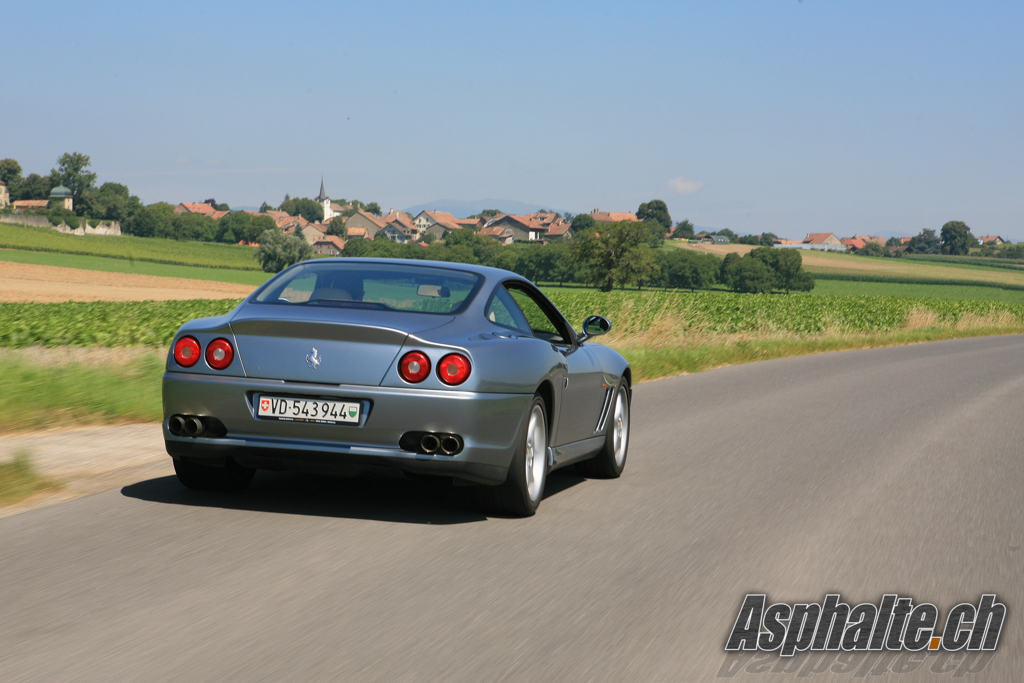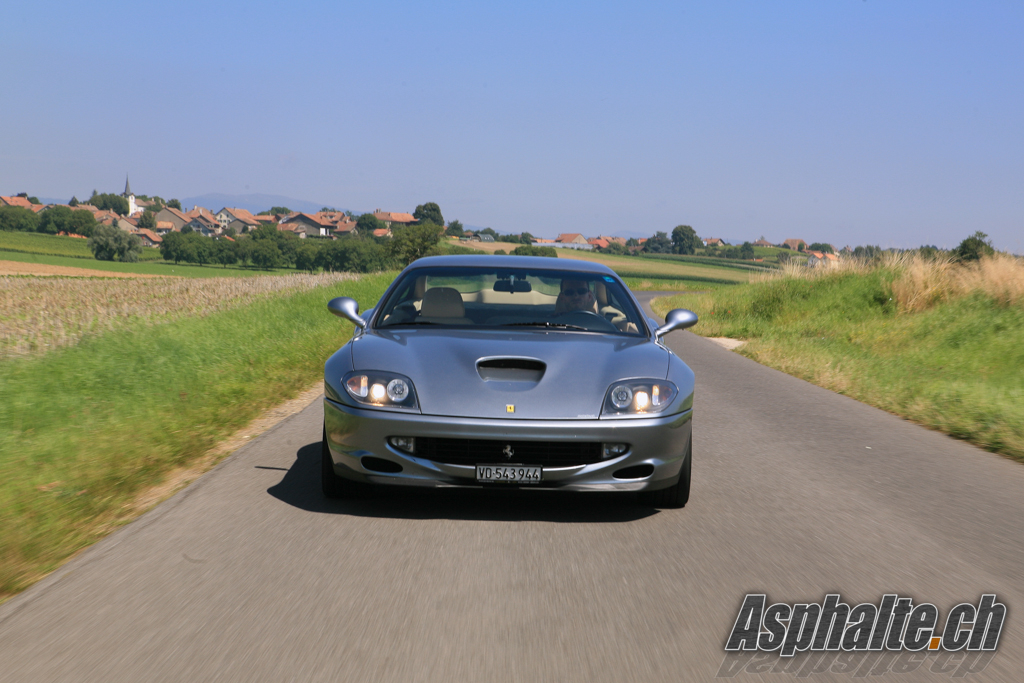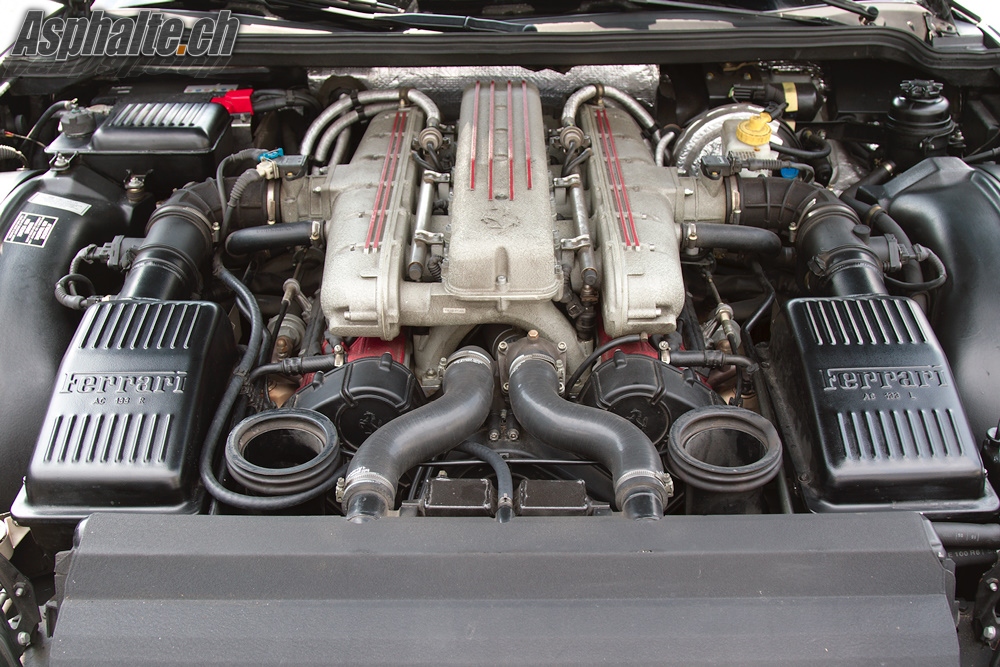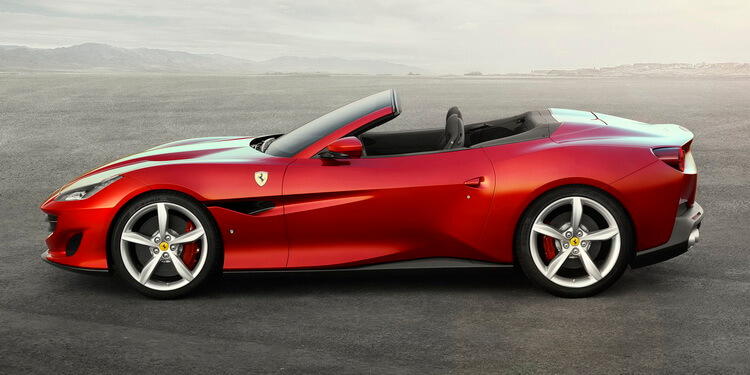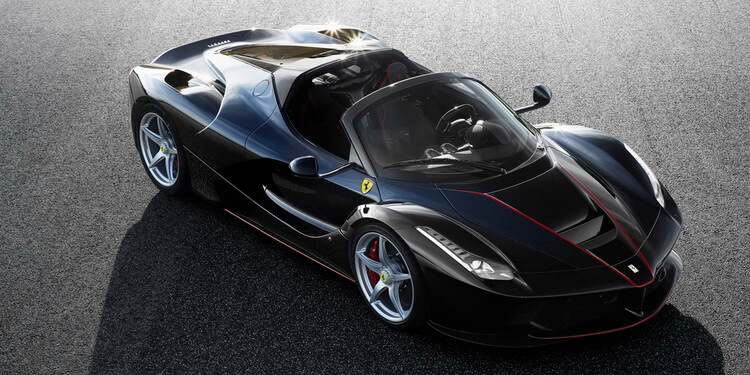Long term test: 35’000 km in a Ferrari 550 Maranello
During and even after its reign at the pinacle of supercars, the 550 was praised for its handling. From its launch in 1997 until its retirement in 2004, the Maranello offered a new dimension in supercar ownership., combining fierce performance with unprecedented usability. A decade later, road handling standards have evolved, but the 550 still exhibits dynamic abilities which I find remarkable, in spite of a few particularities. At cruise speeds, the damping is very stiff, and selecting the soft setting does not do much to improve this. As with the gearbox, the chassis set-up of the 550 starts to make sense at decent speeds, making the car more fluid.
The Maranello tends to sit on its rear wheels under hard acceleration and dives on its nose under breaking, but does not roll a lot. It displays little inertia under sudden direction changes, making it surprisingly agile. Braced into the deeply sculpted seat, driving the 550 fast is a thrilling, involving exercize. Steering is direct and light, but communicates faithfully the grip level under the front wheels. If grip at turn in is frank, the 550 can carry significant speed till the apex, and the throttle generously applied to power out of the bend. If hints of understeer are felt, a little restraint is to be applied. Predictable and honest, the whole process would almost be easy, were perfect downshifts not required at the same time. Revs equalization is important to prevent the car from jerking under engine breaking, and the grip situation under the 295/35/18 rear tires is to be given due care.
The 550 has a neutral mid-corner stance but can be come pretty tail-happy coming out of corners. In Normal mode, the ASR system intervenes quite brutally, cutting off torque completely as soon as any wheel spin is detected. In Sport mode, it is more permissive and lets you indulge in enjoyable doses of wheel spin as long as no lateral acceleration is detected. Then it steps in and reigns things in by cutting engine torque. This makes for some enjoyable though usually benign action, although the system is not infallible. Acceleration on a cold wet road should be approached with a minimum of care as the Maranello can put itself in an interesting sideways stance unbeknownst to the electronic nanny. Sport mode also sets the dampers on their stiffer setting, but the difference is not that obvious. The next level up is to disconnect the ASR entirely with the dedicated switch. There is no safety net then, just driver, machine and physics. Five hundred and sixty-three newton-meters of torque and no last resort Electronic Stability Program sounds like a recipe for disaster, but it is not. The Maranello is the kind of car where disconnecting the ASR is not idiotic bravado, but a guilty pleasure, best enjoyed when conditions (and skills) allow. This is where the 550 made its mark: a supercar which is not only usable, but exploitable. A supercar to enjoy rather than to be afraid of. This said, Sport mode remains adequate for most fast driving conditions, unless power slides are really a goal in themselves. It forces a clean driving style where speed is obtained out of smoothness and precision, but allows the required dynamic envelope to make it involving.
There is in fact no justification not to drive the car in Sport mode all the time, except perhaps in treacherous conditions. It is a car that could be given to nearly anyone to drive in Normal mode, as long as respect is given to the accelerations it is capable of, but a minimum of training is required once the layers of safety nets are removed.
The area of driving aids is most certainly where the contrast between the 355/360/550/575 generation and the 430/599 is the most striking. With the former, electronic interventions tend to be abrupt and clumsy, and are to be worked around. Since 2005 and the introduction of the electronically controlled differentials coupled with engine management (embodied by the Manettino on the steering wheel), electronic aids contribute to driving pleasure. Before, you had to be a hero to disconnect them. Since, they make the driver feel like a hero. From necessary evil, they have become a catalyst to driving enjoyment. Nothing such in the 550, clumsiness or approximation translate into sudden drops in engine torque, and well measured inputs are rewarded.
The 5.5 liter V12 is both torquey and rev happy. Elastic like a chinese gymnast, it accepts to run smoothly at extremely low revs. I usually avoid the 1900-2100 rpm due to the resonance of the aftermarket Tubi mufflers – a much necessary addition to give voice and character to an otherwise mute car – but otherwise the V12 is happy to run smoothly near idle on each gear. Between 3500 and 5500 rpm, the V12 is at cruise altitude. Torque abounds, delivering fierce acceleration and a deep throated growl. The harmonics are very different from the 599 GTB Fiorano, much less metallic. Unless you are in full attack mode, this is the rev range where the V12 is the most enjoyable, vigorous and alive. It is this natural ease to average more than 4000 rpm which surprises at first for a large displacement V12. If necessary and possible, the last 2000 rpm up to the 7500 rpm red line are available, but the small drop in torque between 6000 and 6500 rpm does not make for a seamless crescendo all the way to the red line. Some blame the air filters for restricting induction, I never attempted a test to remediate the issue.

